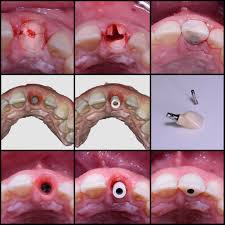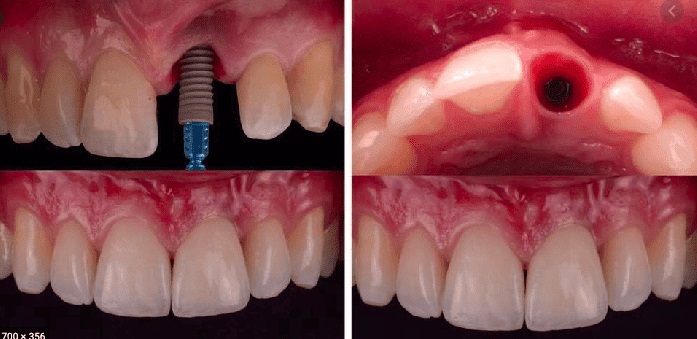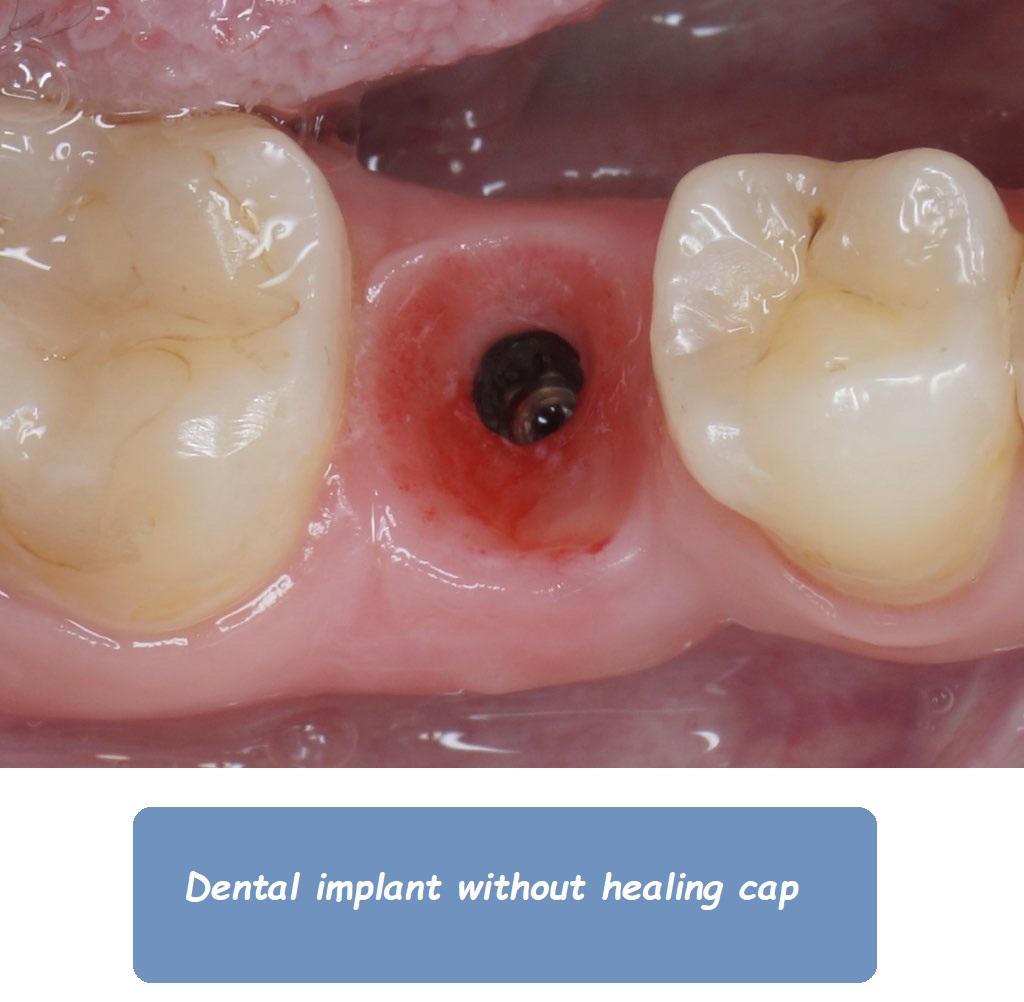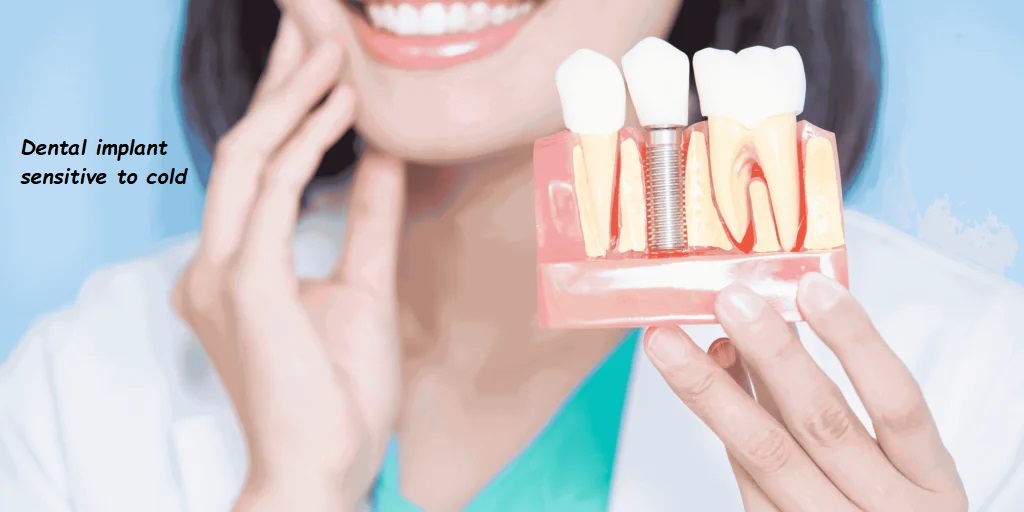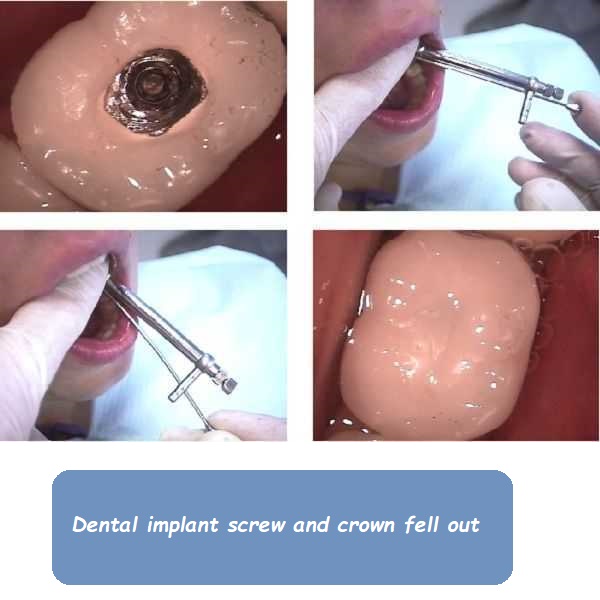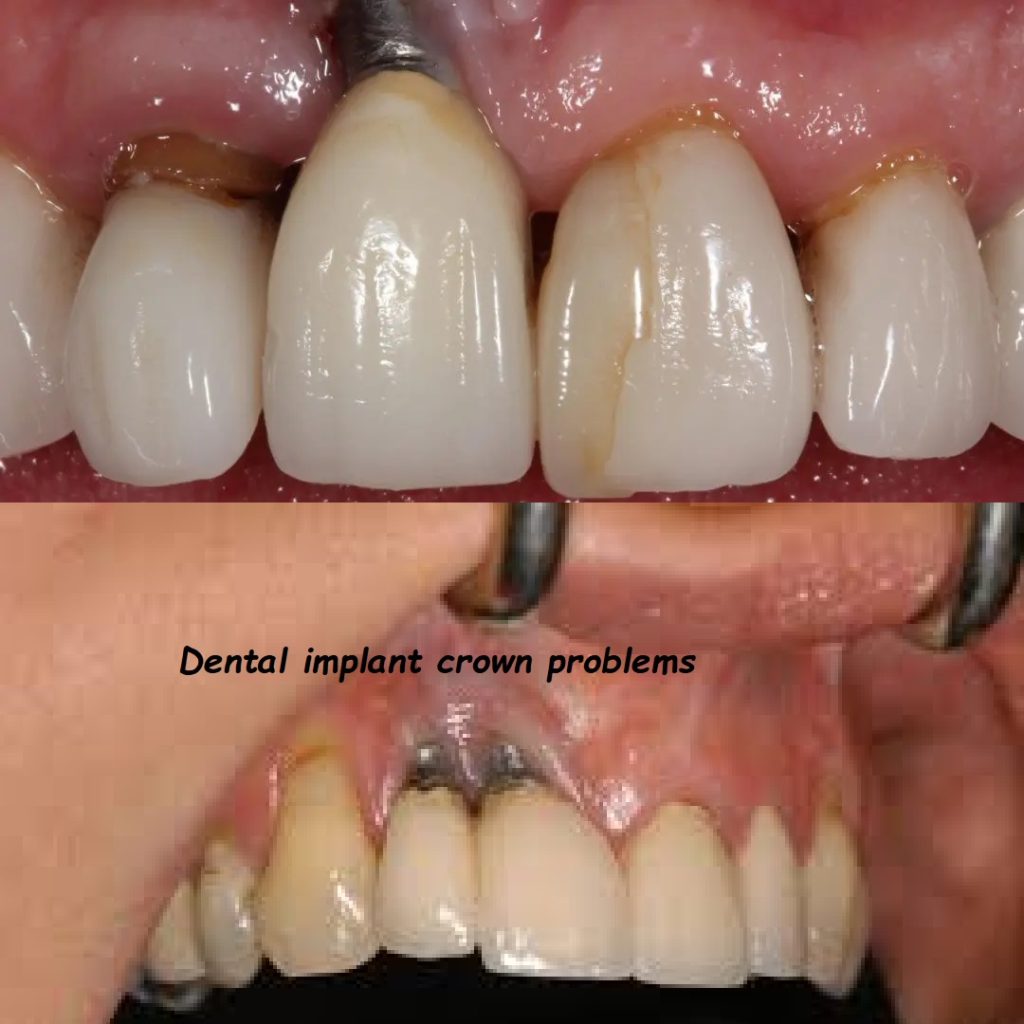What is the process by which the living jawbone naturally grows around the dental implant?

The process by which the living jawbone naturally grows around the dental implant is called osseointegration. This complex, multi-phase process ensures that the dental implant becomes securely anchored to the jawbone, providing a stable foundation for a prosthetic tooth. Here’s a detailed breakdown of the process of osseointegration and the natural growth of the jawbone around a dental implant:
- Preparation and Implant Placement:
- Pre-Surgery Evaluation: Before the dental implant procedure, the dentist or oral surgeon conducts a thorough evaluation of the patient’s oral health and bone density. This evaluation is crucial to ensure that the jawbone is healthy and dense enough to support the dental implant.
- Implant Insertion: During the surgical procedure, the dental implant, typically made of biocompatible titanium, is inserted into the jawbone. This is done under local anesthesia to minimize discomfort. The precise placement of the dental implant is essential for successful osseointegration.
- Initial Healing (First Few Days):
- Inflammatory Response: Immediately after the placement of the dental implant, the body initiates its natural healing process. An inflammatory response occurs, and a blood clot forms around the dental implant site. This blood clot is the first step in the natural growth of the jawbone around the dental implant.
- Soft Tissue Healing: The gums and surrounding soft tissues begin to heal. Reducing initial swelling and discomfort is crucial for the subsequent stages of osseointegration. Proper care and hygiene during this period are vital to prevent infection and ensure the successful integration of the dental implant.
- Early Osseointegration (Weeks 1-2):
- Bone Cells Migration: During the first few weeks, osteoblasts, which are bone-forming cells, migrate to the surface of the dental implant. These cells play a critical role in the natural growth of the jawbone around the dental implant.
- Formation of New Bone Matrix: Osteoblasts begin to produce a new bone matrix around the dental implant. This matrix serves as a scaffold for further bone growth, ensuring that the implant becomes firmly anchored in the jawbone.
- Primary Stability Phase (Weeks 2-4):
- Initial Bone Contact: As the new bone matrix forms, it establishes initial contact with the surface of the dental implant. This contact is essential for the primary stability of the implant.
- Stability Increase: During this phase, the dental implant gains primary stability, which is crucial for the success of osseointegration. The stability of the dental implant at this stage is a strong indicator of how well the jawbone will grow around it.
- Secondary Stability and Bone Remodeling (Months 1-3):
- Secondary Bone Formation: Over the next few months, continuous bone growth and mineralization occur around the dental implant. This phase is critical for enhancing the stability and integration of the implant with the jawbone.
- Bone Remodeling: The jawbone undergoes remodeling, adapting to the stresses and strains placed on the dental implant. This natural process ensures that the bone surrounding the implant becomes denser and more robust, providing long-term stability.
- Maturation Phase (Months 3-6):
- Complete Integration: By the end of this phase, the jawbone fully integrates with the dental implant, creating a solid anchor. This complete integration is the hallmark of successful osseointegration.
- Functional Loading: Once fully integrated, the dental implant is stable enough to support a prosthetic tooth. This allows the patient to resume normal chewing and biting functions, much like with a natural tooth.
- Long-Term Maintenance:
- Regular Check-Ups: To ensure the continued success of the dental implant, regular dental check-ups are essential. These visits allow the dentist to monitor the implant and the surrounding jawbone, ensuring that no complications arise.
- Oral Hygiene: Maintaining excellent oral hygiene is crucial to prevent peri-implantitis and other issues that could compromise the stability of the dental implant. Proper brushing, flossing, and regular dental cleanings help keep the implant and jawbone healthy.
Throughout the osseointegration process, the biocompatibility of the titanium dental implant plays a crucial role. Titanium encourages bone cells to adhere and grow, leading to a strong and durable bond between the implant and the jawbone. This natural growth process ensures that the dental implant functions like a natural tooth root, providing a stable and lasting foundation for dental restorations. The successful integration of the dental implant with the jawbone is key to its long-term functionality and the overall health of the patient’s oral cavity.
What is the Process in Which Living Bone Cells Grow Around an Implanted Titanium Anchor?
Osseointegration: The Biological Process
Definition:
- Osseointegration is the process by which living bone cells grow and adhere to the surface of a titanium implant, creating a stable and permanent bond.
Steps of Osseointegration:
- Implant Placement:
- Surgical Insertion: A titanium implant is surgically inserted into the jawbone. This involves making an incision in the gum tissue, drilling a small hole in the jawbone, and placing the implant.
- Initial Healing:
- Blood Clot Formation: Immediately after placement, a blood clot forms around the implant site, initiating the healing process.
- Inflammatory Response: The body’s natural inflammatory response kicks in, cleaning the area of any debris and starting tissue repair.
- Bone Growth and Remodeling:
- Osteoblast Activity: Osteoblasts, which are bone-forming cells, migrate to the implant surface. These cells begin producing new bone material.
- Bone Matrix Formation: The osteoblasts lay down a bone matrix around the implant. This matrix gradually mineralizes and hardens, forming new bone.
- Integration and Stabilization:
- Bonding: Over time, the newly formed bone integrates with the titanium surface of the implant. The rough or specially treated surface of the implant enhances this bond.
- Maturation: The integration process continues, strengthening the bond between the implant and the bone, ensuring stability and durability.
Importance of Osseointegration:
- Stability: Osseointegration provides a stable foundation for dental prosthetics, ensuring they function like natural teeth.
- Longevity: Proper osseointegration significantly increases the lifespan of the dental implant, often lasting a lifetime with good care.
- Functionality: It restores full functionality, allowing normal chewing and speaking abilities.
Related to read:
Best Oral Hygiene Practices For Optimum Oral Health.
How to Whiten Teeth Naturally?
How to keep your gums healthy and disease-free?
References
To ensure the information provided is accurate and up-to-date, the following sources were referenced:
- American Dental Association. (n.d.). Plaque and Tartar. Retrieved from ADA website
- Mayo Clinic. (n.d.). Dental Plaque. Retrieved from Mayo Clinic website
- National Institute of Dental and Craniofacial Research. (n.d.). Periodontal (Gum) Disease. Retrieved from NIDCR website
How Does Bone Grow Around Dental Implant?
Bone Growth Around Implants: Detailed Explanation
Key Phases of Bone Growth Around Dental Implants:
- Implant Surface and Initial Contact:
- Surface Design: Modern implants have specially designed surfaces (e.g., roughened, porous, or coated with bioactive materials) to promote better bone contact and growth.
- Immediate Response: Upon insertion, the implant surface comes into contact with the bone, triggering a biological response.
- Osteoconduction:
- Bone Scaffold: The implant surface acts as a scaffold, guiding new bone growth along the implant surface.
- Osteoconductive Materials: Materials used in implants are osteoconductive, meaning they support the attachment and growth of new bone cells.
- Cellular Activity:
- Osteoblast Migration: Osteoblasts move to the implant surface and start producing new bone tissue.
- Bone Matrix Deposition: These cells deposit a collagen matrix, which then undergoes mineralization to form new bone.
- Bone Remodeling:
- Bone Turnover: Over time, the bone undergoes continuous remodeling, where old bone is resorbed, and new bone is formed, maintaining a strong bond with the implant.
- Mechanical Stability: The remodeling process ensures that the implant remains stable and can withstand the mechanical forces of chewing and biting.
Factors Affecting Bone Growth:
- Implant Surface: Roughened surfaces enhance bone integration compared to smooth surfaces.
- Biocompatibility: The titanium used is highly biocompatible, minimizing the risk of rejection or adverse reactions.
- Healing Time: Adequate healing time is crucial for optimal bone integration. Typically, this can range from a few months to six months or more.
How Do Gums Grow Around Implants?
Gum Healing and Adaptation Around Dental Implants
Stages of Gum Growth Around Implants:
- Initial Healing (0-2 Weeks):
- Incision Closure: After implant placement, the gum tissue is sutured around the implant. This promotes initial healing and closure of the surgical site.
- Tissue Response: The body’s natural healing response causes the gums to close tightly around the implant, protecting it from bacteria and debris.
- Early Healing (2-4 Weeks):
- Soft Tissue Adaptation: The soft tissue around the implant begins to adapt and form a seal. This seal is critical in protecting the underlying bone and implant from infection.
- Formation of Peri-Implant Mucosa: The peri-implant mucosa, a specialized gum tissue, starts to form around the implant, creating a barrier against pathogens.
- Gum Maturation (4-12 Weeks):
- Gum Integration: The gum tissue continues to mature and integrate with the implant. This period sees increased tissue strength and stability.
- Keratinization: In some cases, the gum tissue around the implant becomes keratinized, similar to the gums around natural teeth, providing additional protection.
Importance of Healthy Gums:
- Barrier Against Infection: Healthy gums create a seal around the implant, preventing bacteria from reaching the bone and implant interface.
- Aesthetic Integration: Proper gum healing ensures that the implant looks natural and blends seamlessly with the surrounding teeth.
- Support for Implant Stability: The soft tissue supports the structural stability of the implant, aiding in its longevity and functionality.
Tips for Healthy Gum Healing:
- Oral Hygiene: Maintain excellent oral hygiene to prevent infection and promote healing.
- Regular Dental Visits: Regular check-ups with your dentist to monitor healing and address any issues promptly.
- Avoid Irritants: Avoid smoking and other activities that could irritate the healing gums.
What is Ossification of Dental Implants?
Ossification: The Process of Bone Formation
Definition:
- Ossification refers to the process by which new bone is formed. In the context of dental implants, it describes the process by which bone cells grow and integrate with the surface of the implant.
Types of Ossification:
- Intramembranous Ossification: Direct formation of bone without a prior cartilage stage. This is how most bones of the skull are formed and is relevant in the initial phases of bone growth around dental implants.
- Endochondral Ossification: Bone formation through a cartilage intermediate, more common in long bones but not typically involved in dental implant integration.
Ossification Process in Dental Implants:
- Initial Bone Formation:
- Osteoblast Activity: Osteoblasts deposit new bone directly onto the surface of the titanium implant.
- Collagen Matrix: A collagen matrix is laid down, which serves as the scaffold for new bone formation.
- Mineralization:
- Calcium Deposition: The collagen matrix undergoes mineralization, where calcium and phosphate ions are deposited, hardening the new bone.
- Bone Maturation: This process continues, gradually increasing the density and strength of the new bone.
- Integration:
- Bone-Implant Bond: The newly formed bone integrates with the implant surface, forming a direct structural and functional connection.
- Continual Remodeling: Bone remodeling continues to optimize the bone structure around the implant, ensuring long-term stability.
Significance of Ossification:
- Stability and Durability: Proper ossification ensures that the dental implant is securely anchored in the jawbone.
- Functional Restoration: Ossification allows the implant to withstand normal chewing forces, functioning like a natural tooth.
- Long-Term Success: Successful ossification is crucial for the long-term success and durability of dental implants.
What is the process by which the living cells of the jawbone naturally grow around the implanted dental supports?
The process by which the living cells of the jawbone naturally grow around the implanted dental supports is called osseointegration. This involves several key steps:
- Implant Placement: The dental implant, usually made of titanium, is surgically inserted into the jawbone.
- Initial Healing: Blood clots form around the implant, initiating the healing process.
- Cell Migration: Osteoblasts (bone-forming cells) migrate to the implant surface.
- Bone Matrix Formation: Osteoblasts produce a new bone matrix around the implant.
- Primary Stability: Initial bone contact provides primary stability to the implant.
- Secondary Stability and Bone Remodeling: Continuous bone growth and remodeling enhance the stability and integration of the implant with the jawbone.
- Complete Integration: The bone fully integrates with the implant, creating a solid and durable bond.
Why does bone grow around titanium?
Bone grows around titanium due to its biocompatibility and osseoconductive properties:
- Biocompatibility: Titanium is non-toxic and not rejected by the body. It does not cause adverse immune reactions, making it suitable for implants.
- Osseoconductivity: Titanium has a unique surface that promotes bone cell attachment and growth. When placed in the jawbone, osteoblasts adhere to the titanium surface and begin forming new bone tissue, leading to strong and stable integration.
How to stimulate bone growth in the jaw naturally?
To stimulate bone growth in the jaw naturally, consider the following:
- Healthy Diet: Consume foods rich in calcium, vitamin D, and phosphorus to support bone health.
- Regular Exercise: Engage in weight-bearing exercises that stimulate bone growth.
- Avoid Smoking and Alcohol: Both can inhibit bone healing and growth.
- Proper Oral Hygiene: Prevent infections that can damage bone health by maintaining good oral hygiene.
- Supplements: Consider taking supplements like calcium and vitamin D if dietary intake is insufficient.
- Regular Dental Check-Ups: Ensure early detection and management of any oral health issues.
What is the process of osseointegration?
Osseointegration is the process by which a dental implant becomes firmly attached to the jawbone:
- Implant Placement: The implant is surgically inserted into the jawbone.
- Inflammatory Phase: The body initiates a healing response, with blood clot formation around the implant.
- Cell Migration: Osteoblasts migrate to the implant surface and begin producing bone matrix.
- Primary Stability: Initial bone contact provides early stability to the implant.
- Secondary Stability: Continuous bone formation and mineralization enhance the stability.
- Bone Remodeling: The bone undergoes remodeling, adapting to the implant and functional loads.
- Complete Integration: The bone fully integrates with the implant, ensuring a stable and durable attachment.
Does the jawbone grow back?
The jawbone can regenerate to some extent under certain conditions:
- Bone Grafting: Surgical procedures like bone grafting can stimulate new bone growth in areas with bone loss.
- Natural Healing: Small defects or injuries can heal naturally over time, especially with proper care and nutrition.
- Dental Implants: Implants can stimulate the jawbone, preventing further resorption and promoting bone health.
Do gums grow around teeth?
Yes, gums naturally grow around teeth. Healthy gum tissue forms a tight seal around the teeth, protecting the underlying bone and providing support. Good oral hygiene and regular dental care are essential to maintaining healthy gums.
Will gums grow around bone graft?
Gums can grow around a bone graft, provided the graft is placed correctly and properly cared for:
- Surgical Technique: Proper placement and stabilization of the bone graft are crucial.
- Post-Surgery Care: Following the dentist’s post-operative care instructions promotes healing and gum growth around the graft.
- Healthy Oral Environment: Maintaining good oral hygiene helps prevent infection and supports gum growth.
Will gum tissue grow around the crown?
Yes, gum tissue can grow around a dental crown:
- Proper Fit: A well-fitted crown ensures that the gum tissue can form a natural seal around it.
- Oral Hygiene: Good oral hygiene practices are essential to prevent gum disease and ensure healthy gum tissue around the crown.
- Regular Dental Visits: Regular check-ups help monitor the health of the gum tissue around the crown and address any issues promptly.
Does bone grow with dental implants?
Yes, bone grows with dental implants through the process of osseointegration:
- Osteoblast Activity: Osteoblasts form new bone around the implant.
- Bone Matrix Formation: The new bone matrix integrates with the implant surface.
- Bone Remodeling: Continuous remodeling and adaptation of the bone ensure a strong and stable implant.
What are the stages of bone healing around dental implants?
The stages of bone healing around dental implants include:
- Inflammatory Phase: Blood clot formation and initial healing response.
- Proliferative Phase: Migration of osteoblasts and formation of new bone matrix.
- Primary Stability: Initial bone contact providing early stability.
- Secondary Stability: Continuous bone growth and mineralization.
- Bone Remodeling: Adaptation and strengthening of the bone around the implant.
- Complete Integration: Full integration of the implant with the jawbone.
How to improve osseointegration of implants?
To improve osseointegration of implants, consider the following:
- Biocompatible Materials: Use high-quality, biocompatible implant materials like titanium.
- Surface Treatments: Surface modifications (e.g., roughening, coating) to enhance bone cell attachment.
- Optimal Placement: Precise surgical techniques to ensure proper placement and stability of the implant.
- Healthy Lifestyle: Maintaining a healthy diet, avoiding smoking, and regular exercise.
- Good Oral Hygiene: Preventing infections and ensuring a healthy oral environment.



